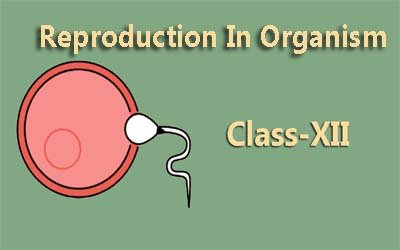Chemical Co-ordination and Integration - Class 11
In Class 11 Biology, Chemical Coordination and Integration dives into the fascinating world of hormones! It explores how these chemical messengers act as a long-distance communication network within your body, coordinating and regulating various functions. Here's a quick breakdown: The Mighty Messengers: Learn about hormones, chemical substances produced by glands and transported by the bloodstream to target organs. Diversity of Duties: Explore how different hormones regulate a wide range of functions, including growth, development, metabolism, reproduction, and even your mood! The Glands in Charge: Discover the endocrine system, a network of glands (like the pituitary, thyroid, and pancreas) responsible for hormone production. Lock and Key Specificity: Understand how hormones interact with specific receptors on target cells, triggering a cascade of effects. Maintaining Balance: Learn how hormones work together to maintain homeostasis (internal balance) within the body. Examples in Action: Explore the functions of specific hormones like insulin, thyroxine, and adrenaline to understand their impact on various bodily processes. একাদশ শ্রেণিতে জীববিজ্ঞানে, রাসায়নিক সমন্বয় এবং সংহতকরণ হরমোনের আকর্ষণীয় জগতে ডুব দেয়! এটি অনুসন্ধান করে যে কীভাবে এই রাসায়নিক বার্তাবাহকগুলি আপনার শরীরের মধ্যে দীর্ঘ দূরত্বের যোগাযোগ নেটওয়ার্ক হিসাবে কাজ করে, বিভিন্ন ক্রিয়াকলাপের সমন্বয় ও নিয়ন্ত্রণ করে। এখানে একটি দ্রুত ভাঙ্গনঃ শক্তিশালী বার্তাবাহকগণঃ হরমোন, গ্রন্থি দ্বারা উৎপাদিত রাসায়নিক পদার্থ এবং রক্ত প্রবাহ দ্বারা লক্ষ্য অঙ্গগুলিতে পরিবাহিত হওয়া সম্পর্কে জানুন। কর্তব্যের বৈচিত্র্যঃ বিভিন্ন হরমোন কীভাবে বৃদ্ধি, বিকাশ, বিপাক, প্রজনন এবং এমনকি আপনার মেজাজ সহ বিভিন্ন ধরণের ক্রিয়াকলাপ নিয়ন্ত্রণ করে তা অন্বেষণ করুন! গ্রন্থিগুলি দায়িত্বশীলঃ হরমোন উৎপাদনের জন্য দায়ী গ্রন্থিগুলির (পিটুইটারি, থাইরয়েড এবং অগ্ন্যাশয়ের মতো) একটি নেটওয়ার্ক, অন্তঃস্রাবী ব্যবস্থা আবিষ্কার করুন। লক এবং কী-এর সুনির্দিষ্টতাঃ লক্ষ্য কোষে নির্দিষ্ট রিসেপ্টরগুলির সাথে হরমোনগুলি কীভাবে যোগাযোগ করে তা বুঝুন, যা প্রভাবগুলির একটি ক্যাসকেডকে ট্রিগার করে। ভারসাম্য বজায় রাখাঃ শরীরের মধ্যে হোমিওস্ট্যাসিস (অভ্যন্তরীণ ভারসাম্য) বজায় রাখতে হরমোনগুলি কীভাবে একসাথে কাজ করে তা শিখুন। কর্মের উদাহরণঃ বিভিন্ন শারীরিক প্রক্রিয়ার উপর তাদের প্রভাব বোঝার জন্য ইনসুলিন, থাইরক্সিন এবং অ্যাড্রিনালিনের মতো নির্দিষ্ট হরমোনের কার্যকারিতা অন্বেষণ করুন।
English
Last updated
Wed, 27-Nov-2024



















